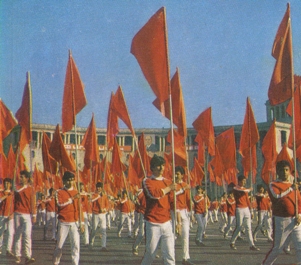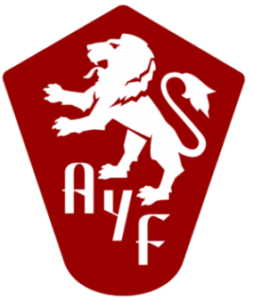Understanding History in Order to Change It: The Soviet Legacy in Today’s Armenia
 Can you imagine trying to understand the depopulation of Nakhichevan or Kharabakh’s struggle for self-determination without considering the impact of Stalin’s decision to carve up these regions from Armenia in 1921? Better yet, can you imagine trying to understand the present state of Armenian-Turkish relations without looking at the facts of the Armenian Genocide? Although some parties, such as Turkey and Azerbaijan, would prefer that we look at issues through such an ahistorical lens, those concerned with truth would be wise to realize the importance of history.
Can you imagine trying to understand the depopulation of Nakhichevan or Kharabakh’s struggle for self-determination without considering the impact of Stalin’s decision to carve up these regions from Armenia in 1921? Better yet, can you imagine trying to understand the present state of Armenian-Turkish relations without looking at the facts of the Armenian Genocide? Although some parties, such as Turkey and Azerbaijan, would prefer that we look at issues through such an ahistorical lens, those concerned with truth would be wise to realize the importance of history.
Simply put, history matters. Those who do not properly understand and acknowledge history are not only doomed to repeat it, they are setting themselves up for even graver outcomes in the future. As historian Howard Zinn has suggested, not being aware of history is like being born yesterday. In his words, “If you forget history, if you were born yesterday, then you’ll believe anything.”
In the case of the present day Republic of Armenia, understanding history means taking a critical look at the previous 70 years of Soviet rule over this land. Only then can we properly understand the current fabric of social and political life and contemplate ways of moving forward.
The Working Class
Contrary to the rhetoric and official proclamations of the Soviet Empire, the USSR was about as socialist as it was democratic. Rather than empowering workers and freeing them from conditions of oppression, Armenia under Bolshevik rule witnessed the domination of workers by the state and its appointed overseers.
Under the Bolshevik regime, workers were placed into arbitrary unions used by the government to control industries and ensure the implementation of party policies. Those who did not obey would face the danger of losing their job, income, benefits, or worse. In effect, the Soviet factory managers replaced the previous owners of capital as the new exploiters of the working class.
In this environment, Armenian workers never had the opportunity to organize independently and exercise their class-consciousness. Perhaps even worse, appeals toward class sensibilities and trade unions themselves became largely discredited by the experience of the Soviet era, which carried out its subjugation under the false banner of ’socialism.’
Meanwhile, in the countryside, Stalin’s brutal collectivization forced peasants against their will into collective farms controlled by local Communist party officials. Those who resisted were executed while many Armenia’s ended up being forced to leave their homes in the countryside and crowd into urban areas.
The countryside itself was left sacrificed for the sake of heavy industry and military production. Virtually no investment was made in the rural economy or infrastructure, resulting in severe decay still felt to this day. In fact, with over 30% of the current population in Armenia working the land, one of the most pressing needs in the area of poverty reduction is investing in infrastructure, such as rural roads and irrigation systems.
A further problem in today’s Armenia is that institutions such as trade unions and worker cooperatives continue to be negatively associated with the repression of the Soviet past. Overcoming this legacy and organizing workers independently to protect their interests will undoubtedly be one of the major tasks for the foreseeable future.
Political Participation & Ideology
In the arena of political participation, the Soviet era has also left an indelible mark on Armenia. Not only were political decisions dictated from above (via Moscow) but even those democratic institutions which did exist served largely as empty, ceremonial devices for validating the Communist regime. For example, there were elections in the USSR but they were virtually all uncontested races, where participation was considered part of the ritual of being a Soviet citizen.
In addition, mass organizations such as youth groups, student organizations, political parties and trade unions were seen simply as stepping-stones for career advancement. Participants usually joined these groups to enhance their future and gain the support of party bosses, not to make a difference in politics or join with like-minded individuals to affect change. As a result, for decades, Armenia was almost completely deprived of the valuable practice of voluntary civic association and engagement.
In turn, the heavy political repression of the Soviet period transformed politics into a nuisance that was to be avoided, not embraced. Naturally, people preferred to keep their true political ideals private and relied the most heavily on close family ties and social networks. The economic hardships and political persecutions of the post-Soviet leadership in Armenia only reinforced this pattern of disillusionment with politics and political participation.
Along these lines, ideology also became a negative connotation for many in post-Soviet Armenia. The USSR’s stated mission of building communism and being driven by ideology discredited the promotion of such ideals in general. People came to expect that their leaders would make ideological proclamations in public but practice something completely different in private. Not surprisingly, ideology in general became negatively associated with Bolshevism and its deceit.
We can see the pitfalls of this phenomenon playing out today, with the ‘opposition’ of Levon Ter-Petrossian having no real platform or ideology to speak of besides calling for a regime change in his favor. Reversing this trend and reinstituting an appreciation for political platforms and clear visions of a more decent future will be a key factor in ensuring a more rapid and healthy democratization process in Armenia.
Corruption
Of course, the fundamental problem of corruption in Armenia also has its roots in the Soviet era. Given the fact that the Communist Party relied on its managerial class (the apparatchiki) to govern affairs, distribute appointmen’s, and hand out benefits, many regional and local ‘leaders’ used their power to expand their own personal gain. If a citizen had a problem, he or she had to turn to the local or city party committee for a solution. Getting help from such highly concentrated centers of power required some sort of ‘connection,’ favoritism, or bribe to those in authority.
Thus, getting by in the Soviet system inherently required political influence, social connections, and personal networks. The totalitarian, top-down nature of management also led to the wasteful distribution of supplies and constant shortages. People were conditioned to set aside national concerns and look out, instead, for their own narrow personal and familial interests.
It was also during the Soviet era that a black market economy developed in Armenia, which then ballooned out of control following independence. This was precisely because the only people who had experience with the market in the Communist period were those who operated illegally. As one can imagine, such individuals were the best skilled at evading laws and taking advantage of circumstances to pull a profit.
Today, people continue to view patronage and family networks as key channels for getting ahead and money, in many ways, has become the new way to get around bureaucratic difficulties and daily obstacles. It is no secret that businessmen who operate in the ‘hadows’ and evade regulation are also prevalent in the economy.
A serious campaign to combat corruption and bring market activity within legal parameters is one of the most important challenges facing the country. This struggle must be waged if we want to see a more prosperous and equitable Armenia.
Moving Forward
The Soviet State had a severe impact on countless other facets of Armenian life; everything from the education system and media to national identity, culture, and relations with the Diaspora. The list is too long to be covered here.
The main point, however, is that the legacy of the Soviet Union must be well understood when analyzing conditions in today’s Armenia. Seventy years of rule behind the ‘Iron Curtain’ had dramatic effects on the development of the Armenian Republic, just as the respective host country each community has been forced to develop under has shaped life in the Armenian Diaspora.
So how do we move forward? One simple starting point would be to reverse the negative trends and artificial characteristics imposed on Armenia during the Soviet period. Returning Armenia to its natural course of development without interference from abroad (whether it be from Moscow, Washington, or anywhere else) would seem to be one of the most basic lessons drawn from the Soviet experience.
The recent political turmoil in Yerevan also suggests that political organization in Armenia needs to focus more on the root causes of social injustice and inequality. The discrediting of class-consciousness, political ideology, and civic organization during the Soviet era is very dangerous and must be overcome soon. Otherwise, as we saw with the campaign of Levon Ter-Petrossian, discontent and political anger in the country can be diverted into demagoguery, sensationalism, and attacks against national unity.
Reviving the true values and ideals of socialism becomes even more critical in this light. This revival can best be assured through democratic, bottom-up organizing around principles of economic equality, accountability, social justice, and national (not personal) priorities.
Achieving such progress will require not only a proper understanding of history but, more importantly, the willingness to change it.


Leave a Reply
Want to join the discussion?Feel free to contribute!